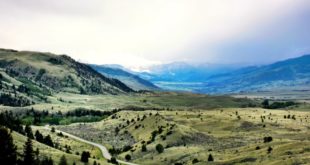The first-ever Superintendent’s Report on Natural Resource Vital Signs warns about the various issues facing Yellowstone in a report that should be ready by anyone interested in the future of the Park. The report, available at the Greater Yellowstone Science Learning Center website, says there’s a two-tier approach to facing challenges within the Yellowstone ecology. “Species that have received the time, effort, and funding of Yellowstone National Park and many other federal and state partners as part of recovery plans under the Endangered Species Act — grizzly bears, bald eagles, and gray wolves — have recovered to sustainable population levels,” Lewis writes. Other issues that receive lots of public attention, like bison management and winter use, dominate discussions of the future of the Park.
But the long-term viability of Yellowstone doesn’t necessarily lie in winter-use plans or the wolf population; indeed, the greater battles will be fought in the less-glamorous trenches over animals and plants that aren’t as telegenic as wolves and bison. They don’t lend themselves well to Ken Burns documentaries, and they don’t inspire passionate advocates to open the wallet and contribute to the cause. As Yellowstone goes so goes America, and the battles will be fought on issues like land use and climate change, as the outside world will continue to encroach on Yellowstone.
While wolf and bison are the dominant symbols of Yellowstone, the more apt species to serve as a symbol of the Park’s future is the pronghorn, a rarely seen inhabitant. It’s not very glamorous to discuss the future of the pronghorn, to be sure; there are fewer than 300 in Yellowstone, and they are not cute and cuddly. That number is alarmingly low: in 1993 there were more than 600 pronghorn sheep in the Park, but the pronghorn numbers have dwindled because they can’t migrate north of the Park due to land-use policies, while their traditional grazing ranges within the Park are dominated by nonnative, invasive weed species. Of the two factors, Park officials can directly only one of them (indeed, the restoration of native grasses in the Gardiner basin is a direct response to the plunging pronghorn numbers) and speak out on land-use issues, which also affect trumpeter swans (whose population in Yellowstone has dipped to six) and other species.
Similarly, one of the biggest ecological challenges within the Greater Yellowstone Ecosystem is the encroachment of disease and pests among the whitebark pines in the Park. Whitebark pine seeds are important for many Yellowstone species, so whitebark pine mortality is a big thing. Why are beetles thriving? Because of global warming; milder winters means beetles can live through a Yellowstone cold spell. The lack of a winter kill gives the beetles a head start for the coming year. Global warming, of course, is an issue that cannot directly be addressed by Yellowstone officials.
Civilization has been steadily encroaching on Yellowstone, under the radar: the air quality in the Park may be good enough for Manhattan, but terrible for the park’s ecological health. More and more species are hemmed in by the artificial boundaries of the Park. And more and more migratory animals are not returning because of ecological practices outside the Park.
Superintendent Lewis has done a great job in identifying the challenges facing the Greater Yellowstone Ecosystem. But that’s a relatively small piece of the puzzle: Her greatest challenge will be coming up with a game plan to address those issues, and if history teaches us anything coming up with consensus plans to satisfy all the major constituencies in the region will be an extremely difficult task.
Photo by JR Douglass, courtesy of the National Park Service.
We’ve also set up a free Twitter account so you can receive updates on the device of your choice.
 Yellowstone Insider Your Complete Guide to America's First National Park
Yellowstone Insider Your Complete Guide to America's First National Park





